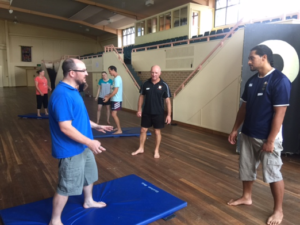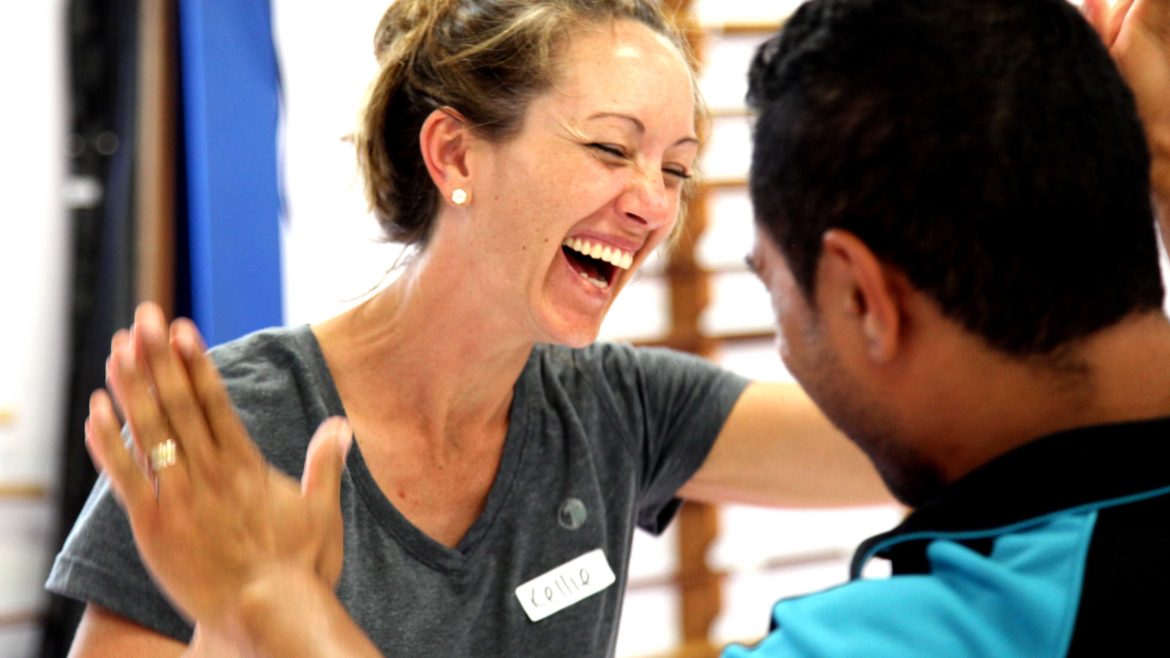Understanding the Golden Triangle
When I teach the Rock and Water program I am ever mindful that no matter what exercise I am doing with students, I must make an effort to connect the physical to the mental and emotional self. I have in my mind at all times the golden triangle, of body awareness, mental or self -awareness and emotional awareness.

A good example of this process is found in the wrestling games. Students grapple with each other in a very physical game, striving to push each other off a mat. They learn that rock, or hard strategies, are not enough. The student must have a feeling for the other’s strength and centre, and use this understanding to re-direct the opponent. This re-direction would be a water strategy. Easy enough on a physical level, but we are mindful that the aim of rock and water is to promote reflection and dialogue about the ways in which we handle our personal and social struggles.
The Rock and Water teacher then introduces a new game, where the students must handle a conflict, but in a verbal manner only. Just like in the physical game, students must feel out the strengths in the opponent’s argument, communicate their own values (rock), empathise with their opponent’s position (water) and try to arrive at a win-win result.
During these conversations, a lot of children will completely lose their sense of centre and ground. They will fail to notice their physical signals, such as increasing heartbeat, tense muscles, raised shoulders and clenched hands. When this happens they run the risk of losing their self- control, and also damaging the relationship with the other by showing a lack of respect.

The golden triangle of body awareness, mental awareness and emotional awareness is therefore at the centre of the Rock and Water method. The good teacher constantly makes these important connections to encourage the student to reflect and make a transfer from the game to their developing social and emotional selves.



